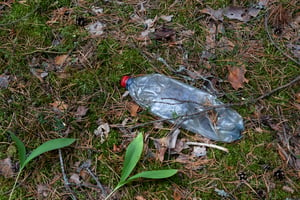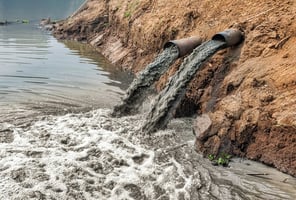We purchase household items, use them as we need, and throw them away when they are at the end of...
Exploring Bioplastic Development and Its Advancements
Plastics are used in nearly every aspect of our lives because they are so cheap to make and are incredibly stable in a wide variety of environments and applications. You see plastic products in food packaging, consumer goods, medicine, and more. Unfortunately, plastics persist in the environment for decades and sometimes centuries. Many may disintegrate in the environment, but still resist biodegradation and break down into small pieces of plastics — microplastics — that pose significant environmental and health problems.
Luckily, there is a solution that is becoming more and more common in the market: biodegradable bioplastics. And, as bioplastic development expands, companies can aid in increasing environmental sustainability, reducing greenhouse gas emissions, and preventing harmful microplastics from entering the environment.
What Technically are Bioplastics?
Bioplastics are plastic materials that are derived from biological substances rather than petroleum. Many times these bioplastics are biodegradable or compostable, unlike their petroleum-based counterparts.
Bioplastics are commonly used in both disposable and non-disposable items. Disposable bioplastics include packaging, containers, straws, bags, bottles, and more. Some non-disposable items that are created with bioplastics may include carpets, plastic piping, phone casings, car insulation, medical implants, and more.
Some Major Types of Bioplastic
PLA — Polylactic Acid
PLA is made of polylactic acid from sugars in corn starch, cassava, or sugarcane. This bioplastic option is biodegradable, carbon-neutral, and edible. PLA is commonly used in plastic films, packaging, bottles, cutlery, auto parts, and textiles.
PHA — Polyhydroxyalkanoate
PHA is made through microorganisms or genetic engineering. This bioplastic is also biodegradable and compostable at high temperatures in industrial composting facilities. It is commonly used to create sutures, slings, bone plates, skin substitutes, and single-use food packaging.
How are Bioplastics Commonly Made?
PLA
PLA can be created by transforming corn or sugarcane into plastic. When using corn, the corn kernels are immersed in sulfur dioxide and hot water. The components of the kernel break down into starch, protein, and fiber. The corn kernels are ground and the corn oil is separated out from the starch. This starch is composed of long chains of carbon molecules, similar to those found in fossil fuels, making it a good alternative. Citric acid is mixed with the starch forming a long-chain polymer that acts as the building blocks for plastics.
PHA
PHA can be made by microorganisms or can be genetically engineered. In the first instance, the microbes are deprived of nitrogen, oxygen, and phosphorus but are given high levels of carbon. This causes them to produce PHA as their carbon reserves. They store PHA in granules and these granules are harvested to create bioplastics.
Bioplastic Development Advancements
There have been many bioplastic development advancements in the past few years, and there are expected to be even more as the need for sustainable plastic alternatives rises. Some of the most important bioplastic developments are listed below.
Flexible PLA Film
PLA has been coupled with polyether plasticizers. This creates a flexible polymer chain, allowing for flexible PLA to be used in even more applications than it already is. This includes flexible PLA films that can be used in waste bin liners, shopping bags, lid films, and packaging.
Advancements in Raw Materials
Bioplastic development is currently looking at additional raw materials to make these plastic alternatives even more environmentally friendly, particularly in their production processes. These raw material advancements include algae, mushroom mycelium, and agricultural waste.
Better Biodegradability and Compostability
Many companies are looking to improve the biodegradability and compostability of bioplastics. Many of the current bioplastic options are only biodegradable or compostable in industrial settings where temperatures are very high and conditions are highly controlled. The goal here is to create bioplastics that can easily biodegrade or be composted in a wide range of environments. Additives and other advancements are being applied to bioplastics to improve efficient decomposing in various environments.
Better Functionality
One of the ways bioplastics are being improved upon is through additives to enhance their functionality, which has long been a major headwind for adoption. Some of these bioplastics have additives that make them UV resistant, improve their barrier, and add antimicrobial properties. These will allow bioplastics to be more durable and better suited for a wider range of applications.
Do You Want to See Where Your Bioplastics Stand? Test Their Biodegradability, Ecotoxicity, and Compostability with Aropha
At Aropha, we offer biodegradability, ecotoxicity, and compostability testing for a wide range of products, including bioplastics. We combine our digital twin simulation platform with lab biodegradability testing to save you time and money. You’ll be able to simulate our different biodegradability tests on ArophaAI by just using the chemical formula of your products, and then your products can undergo traditional lab testing to get the documentation needed for eco-labels and other certifications.
Contact our team today to learn more about our biodegradability testing for your bioplastics.



